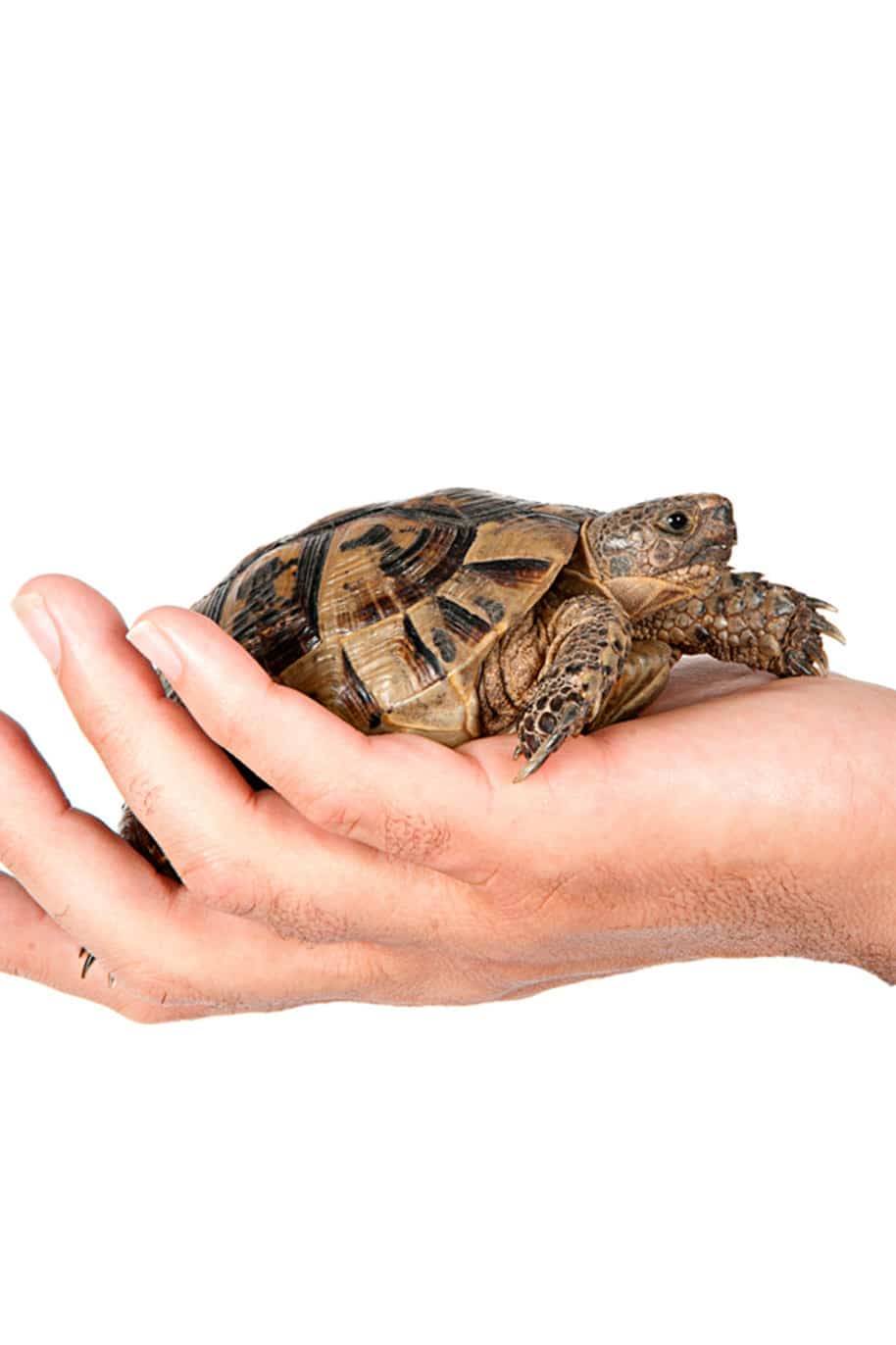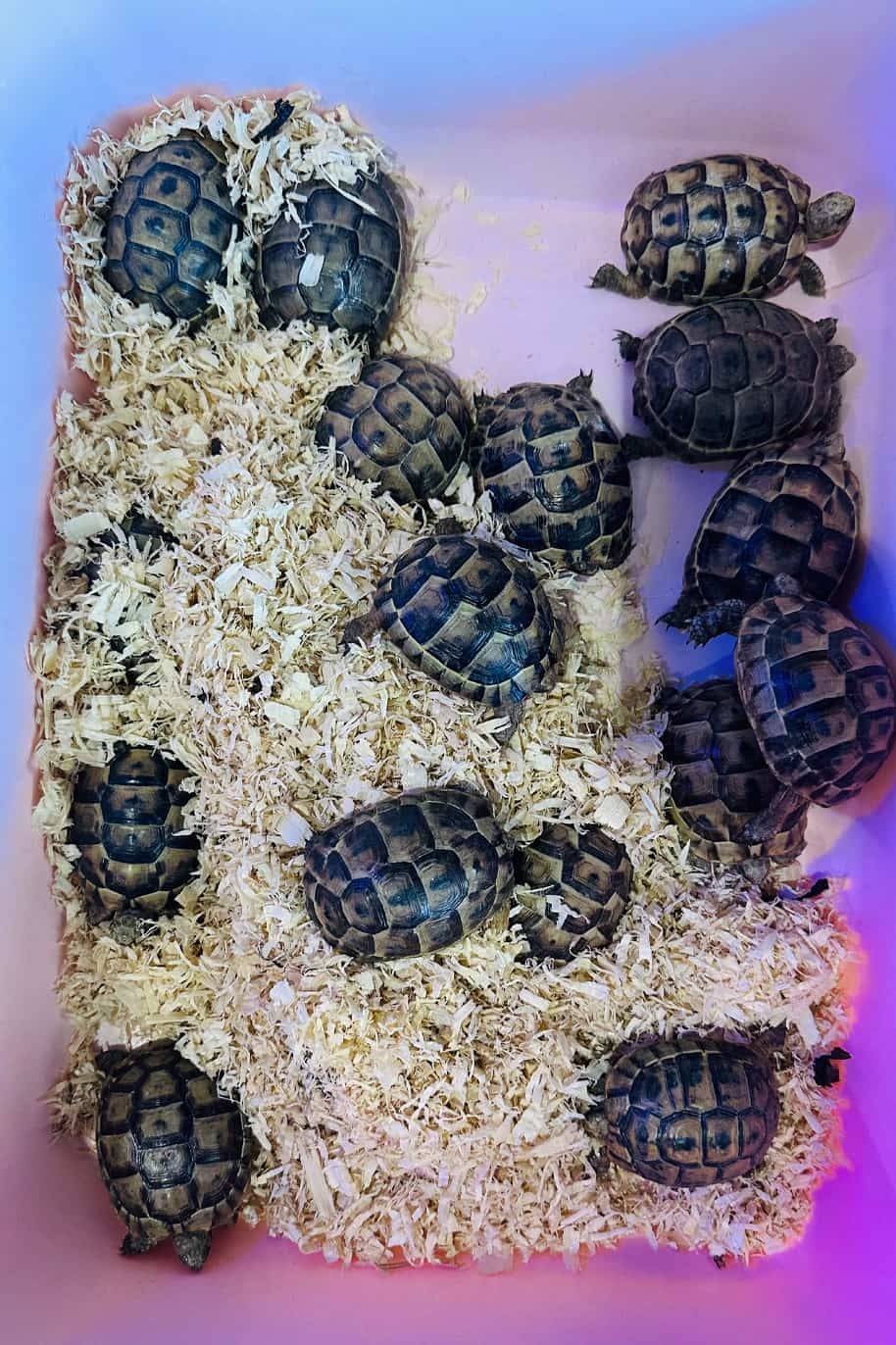Hermannn Tortoise for Sale Online | Quick Delivery in the UAE | Plantshop.me
Dismiss



Hermann Tortoise
Hermann
SKU 5803
AED 168
Qty
Choose your delivery location
Product Bio
Hermann's tortoise—along with the spur-thighed tortoise and the marginated tortoise—is a Mediterranean tortoise that hails from the rocky hillsides and oak and beech forests of Mediterranean Europe. This attractive tortoise, with a yellow and brown carapace, thick scales, and strong legs, is highly coveted for its mild temperament and its sheer beauty. Care for this tortoise is relatively easy if you live in a suitable climate with plenty of outdoor space. Otherwise, indoor care is complicated.
The passive and gentle Hermann's tortoise rarely bites. Typically, it will only bite other tortoises, pets, or humans to defend itself. It does not like to be handled, preferring to stay safely grounded.
This active creature likes to run, dig, forage, and sunbathe. It is not much of a climber. Tortoises frequently interact and can engage in combat, especially during the mating season in spring and fall. During courtship, male tortoises will chase and ram the females, sometimes causing harm. Only bring males and females together if you intend to mate them; otherwise, house them separately.
Housing the Hermann's Tortoise
Adult Hermann's tortoises do not fare well indoors, so keep this in mind before bringing one home. Since outdoor housing is strongly recommended, your outdoor climate should closely resemble the Mediterranean region's (Italy, Greece, Bulgaria, and Romania) climate.
A tortoise habitat should consist of a shallow pan of water (preferably sunk into the ground) for drinking and cooling off, rocks, small trees and bushes, and a shelter to protect it from extreme weather and predators. The pen should also be escape-proof with fencing or sides dug a couple of feet underground since these active tortoises tend to burrow.
If you ultimately decide to house your tortoise indoors or move it inside during colder weather months, a relatively large enclosure is necessary (2-feet by 4-feet at minimum).
To keep the enclosure clean, scoop up visible pet wastes when you notice them. Change the water pan daily. You will need to change the substrate at least every one to two months.
Heat
If housed outside, daytime temperatures should average around 80 F to 86 F (27 C to 30 C) and shouldn't fall below 65 F to 70 F (18 C to 21 C) at night. Mimic these temperatures in an indoor enclosure. Lighting will be your primary source of heating for indoor enclosures. Whether inside or outside, it is also necessary to have a cool, shaded area for your tortoise to escape the heat. Make sure the water pan that you provide is deep enough for your pet to immerse its whole body in case it wants to cool off.
Light
If outdoors, the sun will provide adequate lighting. If indoors, provide a basking light or heat lamp that mimics the sun, complete with a basking spot (a set of low, flat rocks work well) with an ambient temperature of about 95 F (35 C).
Tortoises require UVB light to synthesize vitamin D3. Vitamin D3 helps the tortoise absorb calcium, which is crucial for bone structure and growth. All indoor enclosures should include a 10 percent fluorescent UVB tube light with a reflector to spread the UVB rays downward to the tortoise.
Humidity
Humidity is not a significant concern for tortoises. As long as the humidity is at least 25% or higher (most indoor and outdoor environments are), then ambient moisture is adequate for your tortoise.
Substrate
Most pet owners use a substrate or bedding to line the bottom of the cage. In the case of tortoises, they need it for digging. For indoor enclosures, a mix of soil, sand, and composted cypress bark should make up the substrate in your pet's enclosure. The compost mixture should be about two inches deep so that your tortoise can burrow to cool itself off or get activity and exercise.
Food and Water
A tortoise's diet should replicate wild foraging. Choose a variety of leafy greens and grasses to feed your pet. Supplement greens with smaller quantities of broccoli, cabbage, cauliflower, cucumber, and carrots, apples, apricots, grapes, melons, peaches, and strawberries. Feed it once daily at the same time every day from several food trays spread throughout the enclosure. Give them as much food as they will eat within 15 to 30 minutes, or you can estimate the pile of food to offer should be about the size of the animal's shell.
An indoor tortoise requires nutrient boosters to make up for its lack of direct sunlight. Give your pet a high-quality tortoise food that includes calcium and vitamin D3 supplements. Wild tortoises also eat insects, slugs, and carrion, but if you feed these critters, offer them in moderation. Tortoises are primarily vegetarian; never feed them a dog or cat food.
Hibernation
If the enclosure or outdoor temperature drops below 50 F, your pet tortoise may decide to hibernate. Some species hibernate in the wild for up to five months, usually between October and April. For indoor tortoises, however, it is hard to maintain the environmental conditions conducive to a safe hibernation. Therefore, it's best to maintain a consistent enclosure temperature, keeping your tortoise active all year long.
Join Now to Receive Exclusive Deals!
"Sign up for our emails and get exclusive discounts on all your favorite plants and gardening products!"
Now we’re in this together.
Your welcome email is on the way!
You’ve subscribed to: Plantshop.ae Newsletter.
You can always manage your subscriptions through the “Unsubscribe” link at the foot of each Plantshop.ae newsletter.


Now we’re in this together.
Your welcome email is on the way!
You’ve subscribed to:
Plantshop.me Newsletter.
You can always manage your subscriptions through the “Unsubscribe” link at the footer of each Plantshop.me newsletter.





